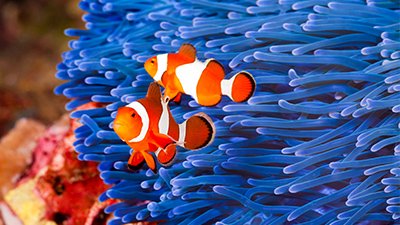
Reverse Evolution Found In Small Fish Species
We all know about evolution’s supposed constructive results over the course of millions and millions of years. But what about a new study that documents “reverse evolution” in the last half century?
News Source
Although the researchers are from the Fred Hutchinson Cancer Research Center, the subject for the study is a fish called the threespine stickleback and one of its habitats, Lake Washington (near Seattle).
Decades ago, pollution rendered the lake a “murky cesspool” of algae with poor transparency. For the sticklebacks living in the water then, the thick soup served as a measure of security against predators—such as the cutthroat trout—who had difficulty eyeing the sticklebacks for lunch. As a result, the sticklebacks lost their bony armor that had formerly helped protect them from predators.
The sticklebacks lost their bony armor that had formerly helped protect them from predators.
In the 1960s, however, a cleanup effort reversed pollution and its effects on the lake, and today’s Lake Washington is a pristinely popular home and getaway—with greater aquatic transparency. So what about the sticklebacks? Researchers Katie Peichel and colleagues report that now, approximately half (49 percent) of sticklebacks have armor once again, and another third (35 percent) have partial plating. “This rapid, dramatic adaptation is actually an example of evolution in reverse, because the normal evolutionary tendency for freshwater sticklebacks runs toward less armor plating, not more,” the ScienceDaily-adapted news release explains. Peichel’s team hypothesizes that the improved transparency of the lake led to increased predation of the unarmored sticklebacks from trout, prompting the return of armored sticklebacks.
Evolution, in its most straightforward biological definition, simply means the change in a biological population over time (ultimately, a change in gene frequencies). Thus, the stickleback population’s loss of armor was evolution, and now the reappearance of the armor is evolution. On the surface, an evolutionist can validly make the claim that this is “evolution in action.” But let’s take a look at the creationist’s explanation for the stickleback change.
The creationist observes change in populations, just as the evolutionist does, and likewise sees this change as (often) driven by selective pressure, such as a predator’s preferential consumption of part of a population. When trout predation was high (due to the water’s initial transparency), unarmored sticklebacks would have been at a distinct disadvantage; they would have been eaten more often and their numbers would atrophy relative to armored sticklebacks. Then, when pollution inhibited trout predation, the unarmored sticklebacks would have lost their disadvantage; perhaps they even had some other advantage (such as a faster development period or lower food needs) that would have allowed them to flourish more than the armored sticklebacks. Thus, the population would have changed from mostly armored to mostly unarmored as time passed.
The population would have changed from mostly armored to mostly unarmored as time passed.
Finally, with the return of trout predation, unarmored sticklebacks once again were at a disadvantage and selective pressure has begun to drive them away. When we look at the population as a whole, it appears that sticklebacks lost their armor then regained it. Yet when we realize that we’re actually talking about the relative success of armored individuals versus unarmored individuals, this is obviously completely different from the “evolution” some scientists claim led from molecules to man.
Now read the researchers’ explanation, as revealed in the news release:
The ability of the fish to quickly adapt to environmental changes such as increased predation by the cutthroat trout is due, Peichel believes, to their rich genetic variation. The sticklebacks in Lake Washington contain DNA from both marine (saltwater) fish, which tend to be fully plated, and freshwater sticklebacks, which tend to be low-plated. When environmental pressures called for increased plating, some of the fish had copies of genes that controlled for both low and full plating, and so natural selection favored the latter.
“Having a lot of genetic variation in the population means that if the environment changes, there may be some gene variant that does better in that new environment than in the previous one, and so nature selects for it. Genetic variation increases the chance of overall survival of the species,” Peichel said.
So the team’s research fits the creation model perfectly: predation prefers one genetic variation of stickleback, so the change in predation levels—selective pressure—has influenced the relative proportion of armored versus unarmored sticklebacks. And all that “evolution” in just a half century!
The team’s research was published in this week’s Current Biology.
Further Reading
- Is Natural Selection the Same Thing as Evolution?
- Natural Selection vs. Evolution
- How Manatees Lost Their Legs?
- Get Answers: Natural Selection
For More Information: Get Answers
Remember, if you see a news story that might merit some attention, let us know about it! (Note: if the story originates from the Associated Press, FOX News, MSNBC, the New York Times, or another major national media outlet, we will most likely have already heard about it.) And thanks to all of our readers who have submitted great news tips to us. If you didn’t catch all the latest News to Know, why not take a look to see what you’ve missed?
(Please note that links will take you directly to the source. Answers in Genesis is not responsible for content on the websites to which we refer. For more information, please see our Privacy Policy.)
Recommended Resources

Answers in Genesis is an apologetics ministry, dedicated to helping Christians defend their faith and proclaim the good news of Jesus Christ.
- Customer Service 800.778.3390
- © 2024 Answers in Genesis






